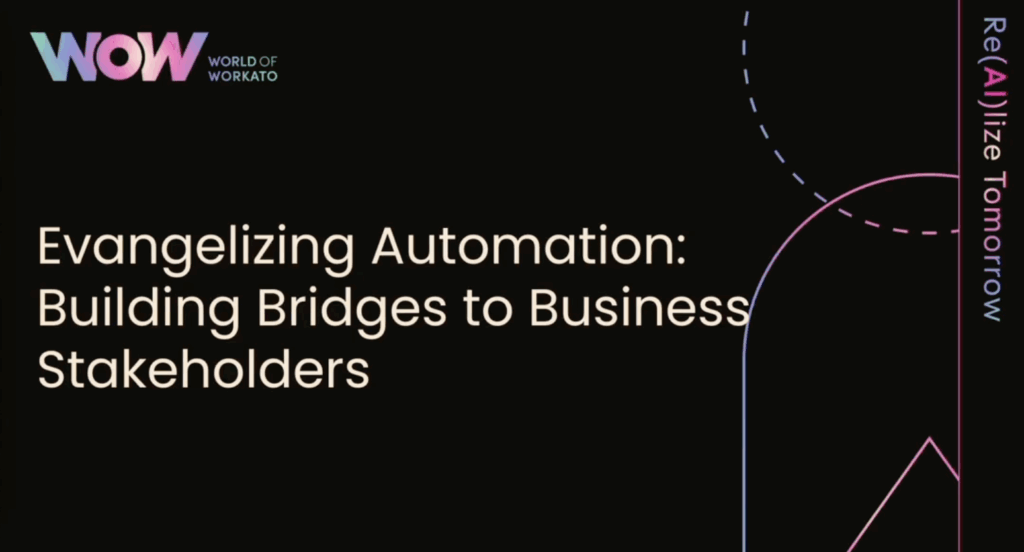Most organizations know automation is valuable, but turning that belief into action across business units is a different challenge altogether. Too often, automation stays locked in IT, seen as a side project rather than a core driver of growth.
At this year’s Workato’s WOW Conference, I sat down with Amplitude’s Devesh Gupta and Collibra’s Jesse Vang to learn how they broke through those barriers. Their stories show that real adoption happens when you combine grassroots advocacy with clear frameworks backed by executive sponsorship.
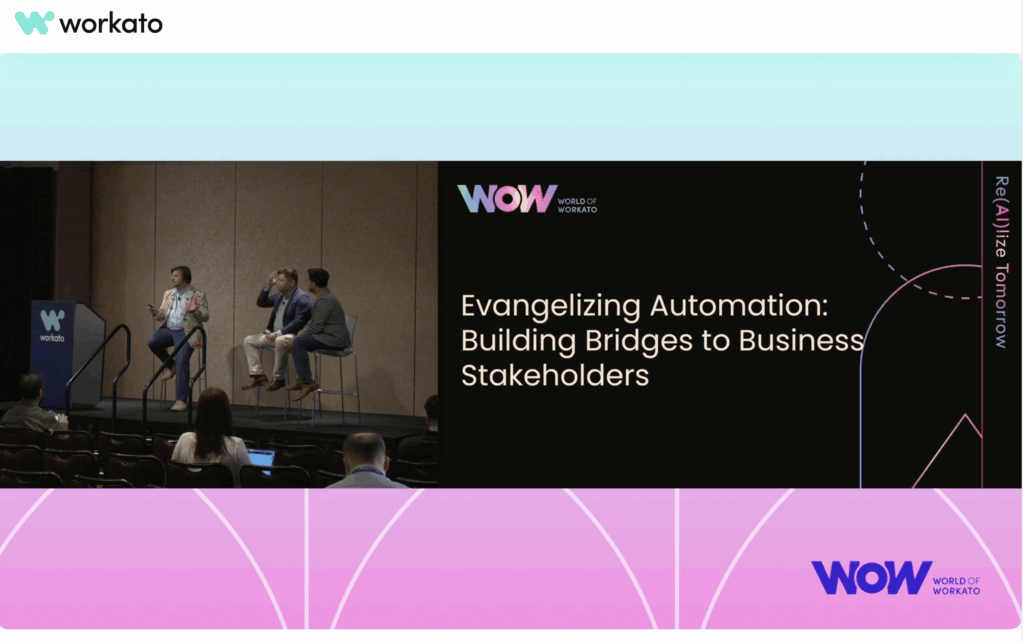
Watch the full session to see their frameworks and dashboards in action
The challenge of evangelizing automation
Both Amplitude and Collibra faced the same starting point: business leaders who saw automation as “IT plumbing” rather than a business enabler. Executives had other priorities, and frontline employees often assumed automation was too technical for them to contribute.
The key to changing that mindset was evangelism. Not just explaining what automation is, but showing real wins where automation saves time, reduces errors, and creates opportunities for growth.
Lesson 1: Grassroots energy needs executive sponsorship
At Amplitude, Devesh knew early wins would only matter if they were visible. His team focused on high-impact use cases, ran live demos at all-hands meetings, and recruited “citizen developers” from across finance, sales, and marketing.
But those grassroots wins only stuck because he also secured sponsorship at the top. Every project was tied directly to company OKRs. Executive leaders saw automation not as a side project, but as a strategic initiative. That combination created a flywheel effect, champions at the bottom and executives at the top reinforcing each other.
Results at Amplitude:
- 150 automations delivered in two years
- More than 30,000 hours saved across the business
- Five AI agents deployed in less than three months, handling 60+ business queries and saving 4,500 hours.
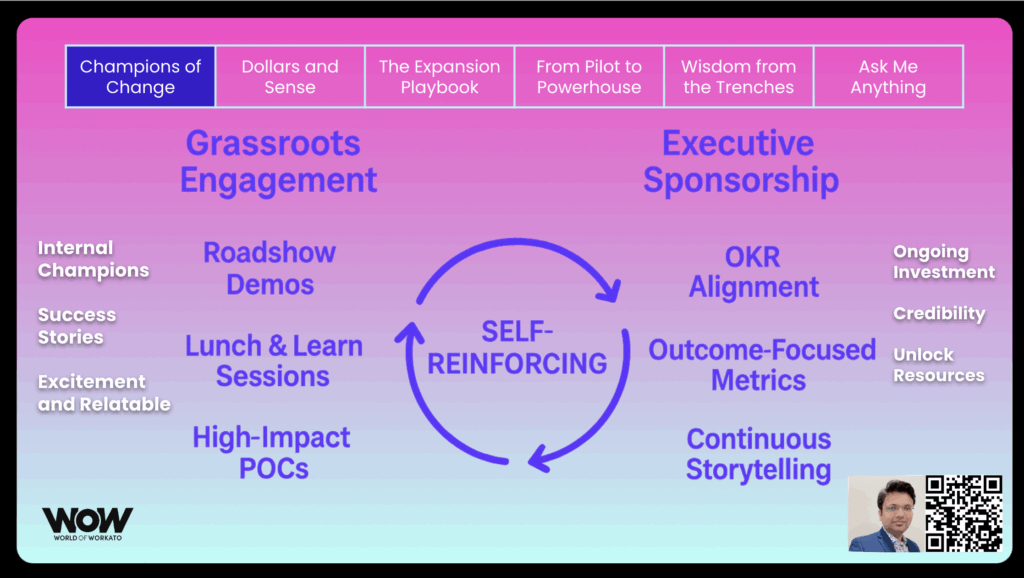
Lesson 2: Show the value, not just the potential
At Collibra, some business units embraced automation immediately while others hesitated. Jesse realized that explaining capabilities was not enough. Stakeholders needed to see the results in front of them.
His team built an ROI dashboard that displayed hours saved, tasks completed, and error rates. Business leaders could log in and see how automation was paying off. This shifted conversations away from debating whether automation was valuable toward deciding which processes should be prioritized next.
A signature achievement was automating the order-to-cash process. What once required hours of manual entry now happens in seconds. Beyond the time savings, this also brought CRM and finance teams together around a shared process, breaking down silos that had existed for years.
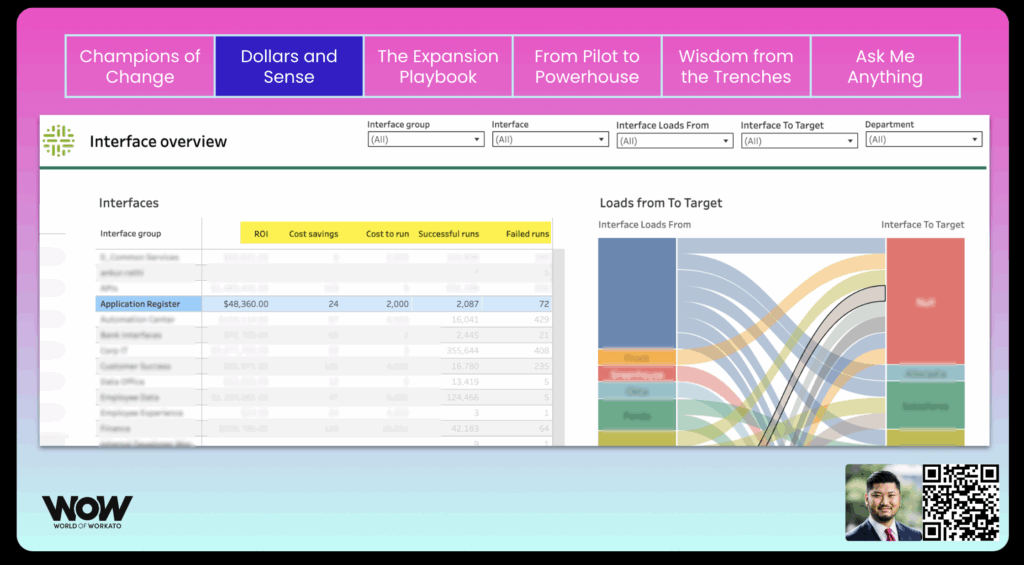
Lesson 3: Governance enables scale
Both Devesh and Jesse emphasized that lasting success requires structure.
Amplitude created a single intake process in Asana, limited projects to ten per quarter, and documented everything in Confluence. This transparency ensured that priorities were aligned and competing requests were visible.
Collibra established two tracks. IT-managed automations handled high-risk use cases while a citizen integrator program supported safe self-service. They also launched a “Hire an Engineer” model, where IT partnered directly with business users in co-building sessions.
The result was the ability to scale automation across the enterprise without creating chaos.
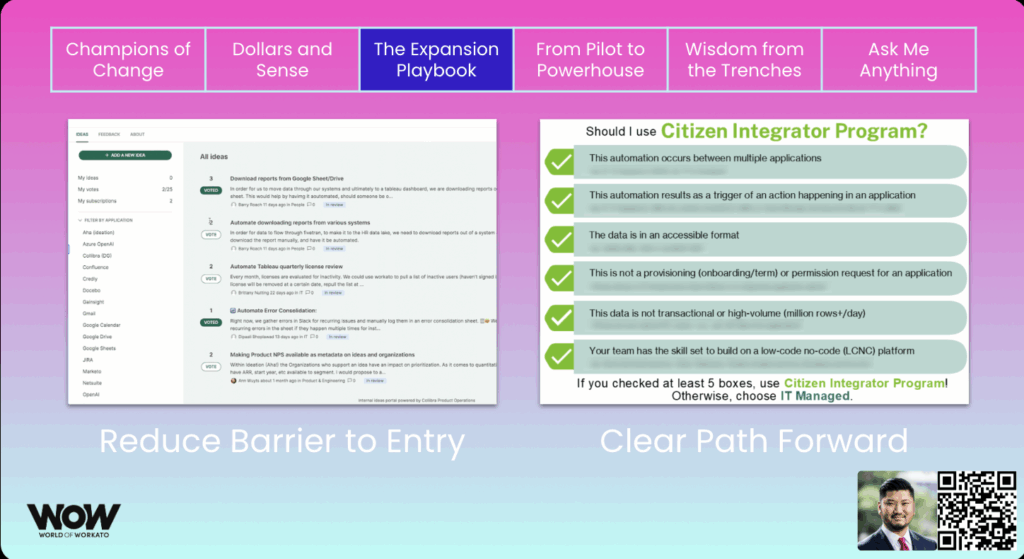
A blueprint for your automation journey
The stories from Amplitude and Collibra are unique, but the steps they followed form a consistent playbook:
- Tie automation initiatives directly to company strategy and OKRs
- Start with visible wins and showcase them at all-hands or dedicated automation days
- Build champions across the business and pair them with IT mentors
- Measure impact with clear metrics such as hours saved and process improvements
- Put governance in place with intake forms, documentation, and clear ownership
- Plan for scale by setting aside time for refactoring and enabling safe self-service
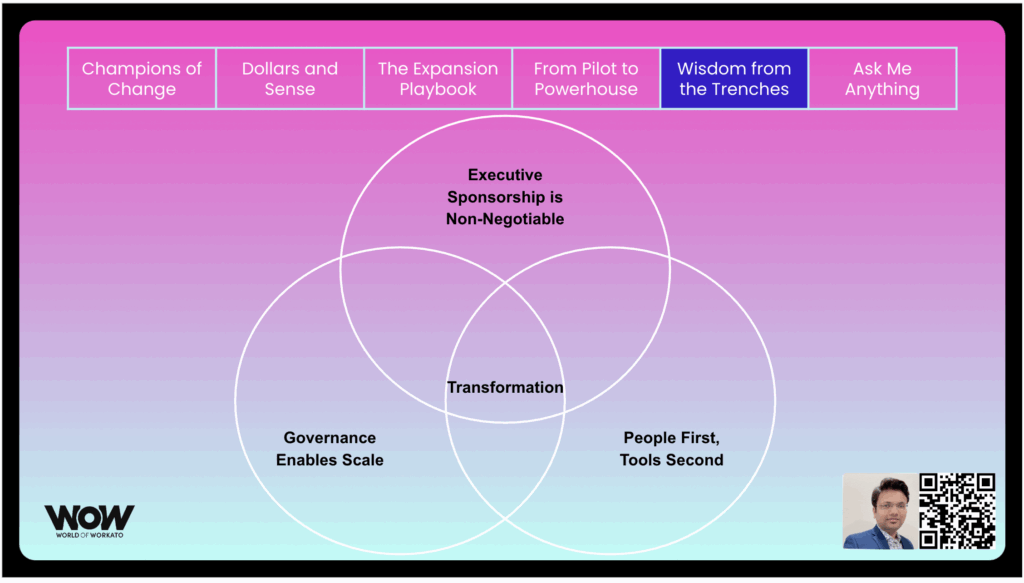
Why it matters now
Automation is no longer just about efficiency. With AI and intelligent agents gaining traction, the organizations that succeed will be the ones that can orchestrate people, processes, data, and AI together.
Capgemini estimates that 82% of enterprises plan to use AI agents within the next three years. Without strong governance and orchestration, those initiatives risk becoming siloed and unmanageable. The foundations Devesh and Jesse described are the same ones that will prepare companies for the next wave of automation.

Want to see more?
Watch the full conversation with Amplitude and Collibra to see their frameworks, dashboards, and adoption strategies in detail.
